


 Note:
From 13 March 2007 this page is under renewed construction while commentary and
new illustrations of Jamaica heritage are prepared for upload - Ed . Now being
prepared for this page is a copy of most of an 1850 report on an 1850-1851 outbreak
of cholera on Jamaica, by Dr. Milroy.
Note:
From 13 March 2007 this page is under renewed construction while commentary and
new illustrations of Jamaica heritage are prepared for upload - Ed . Now being
prepared for this page is a copy of most of an 1850 report on an 1850-1851 outbreak
of cholera on Jamaica, by Dr. Milroy.
Data made available by Peter Dickson (UK)
Other sections of Peter Dickson's article appear
at: |
SECTIONS OF THE REPORT ON THE CHOLERA IN JAMAICA (and correspondence relating thereto), Encl 1, in No. 1, Report of Dr. Milroy (All the report is by Dr. Milroy. -Ed.)
Page 24 below...
... localities in the parish quite apart, and considerably remote from each other, such as at Fairfield near Montego Bay, and Newman Hall, intermediate between the bay and Maroon Town. In the latter district, which is much more elevated than the the former, the cases were only sporadic and solitary, showing no tendency to spread. The severe outbreaks occurred near river courses, and where rank vegetation abounded, especially around dwellings." The negro villages on the estates of Catharine's Hall, Irwin, and Latium were most severely visited. On the last-named property, where the disease appeared on the 5th, upwards of three-fourths of the people died. "The attacks were often so rapidly fatal that able-bodied labourers, while employed in the boiling-houses, were seized with cramps and spasms, became collapsed at once, and speedily expired. Numerous corpses remained unburied for days, and others were laid in such shallow graves that the atmosphere became tainted with the putrid effluvia." Upon another estate, where the disease broke out on Christmas-day, after heavy rain, no fewer than 17 deaths took place within four or five hours.
PayPal - safe and secure |
|
If you value the information
posted here, |
Hanover was about two or three weeks later in being visited by the epidemic than the parish of St. James, immediately eastward of it. The spot where it first appeared was on the sea-coast at Sandy Bay, about 12 miles to the windward of Lucea, the principal town. A case (whether imported or not was known) occurred there on the 29th November; and this was followed by several others during the next week or two, not only in Sandy Bay, but also at several neighbouring places on the coast, such as Tryall, Mosquito Cove, Flint River, &c. During the latter part of November there was a good deal of diarrhoea and other sickness at Lucea, and the inhabitants were in consequence in great alarm at the dreaded advent of cholera amongst them. A dew isolated cases occurred during the first half of December; but it was not till the last week that the epidemic invasion can be said to have commenced. By the end of the year the daily mortality was rapidly on the increase. At two or three points on the coast westward of Lucea, and in the direction of the adjoining parish of Westmoreland, sporadic cases took place during the present month; one at Cousin's Cove on the 18th, one at Green Island on the 11th, and a second there on the 18th, &c. The disease seemed also at this time to be extending itself over the high lands in the interior, towards the confines of Hanover with Westmoreland.
As the history of the epidemic in the latter parishes presents some peculiar
features of interest, it will be useful to note all the circumstances that are
known. During December, several fatal cases had occurred on the borders of Westmoreland
and St. James. There were all in persons who had returned from Montego Bay,
where, as has been seen, the pestilence then prevailed. In no instance did the
disease spread to others. On the 19th, a man was attacked in a boat at Savanna-la-Mar.
The boat had come from Falmouth. He was attended by all the resident medical
men, and recovered. The other two men in the boat were not affected. At Mount
Pleasant, about five miles eastward from Savanna-la-Mar, and also in the Blue
Fields district a little further on in the same direction, there was a considerable
amount of bowel complaints throughout the entire month, but no case of cholera
occurred. At Achindown, intermediate between Savanna-la-mar and Black River,
a solitary case occurred about Christmas. The person came from Black River.
None of the other inmates of the hut sickended, nor did any other case ensue
upon the estate. 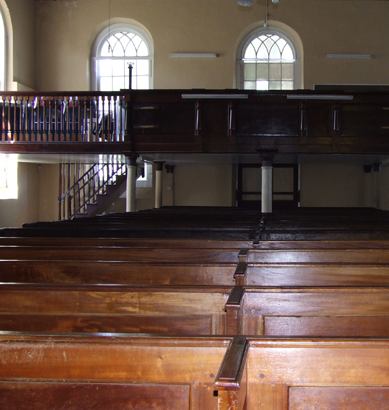
St Elizabeth. - The pestilence continued in force at Black River until the end of the third week in December. The entire mortality amounted to 120 out of a population of between 900 and 1,000. None of the better-conditioned classes, except two or three persons of very intemperate habits, died. Only one white person was severely attacked. The town is surrounded on two sides by a morass and the river, the other side facing the sea. That portion of the town where the first case happened, and where the greatest mortality occurred, is in all seasons the most unhealthy. During the height of the disease at Black River, a vessel arrived there with medicines on board. She was detained in quarantine for some days, before being permitted to have communications with the shore. The health officer said he had no alternative, considering the orders which he had received. In the first week, the disease spread to the rural districts inland from Black River. It appeared at Middle-quarters on the 7th, and at Holland and Lacovia about a week later. On Holland estate it broke out with exceeding malignancy; the country around is very wet and marshy. As almost all the attacks were at night. and as the negroes would not then stir out of their huts to procure assistance for their relatives, they felt cold, they said, and saw figures dancing on the ground, a large proportion of the attacked were found dying or dead next morning when visited by the overseer. In several instances the unfortunate victim. was at once abandoned by his family, without so much as water near him to slake his thirst. No sooner did life appear be extinct, than the body was put into a grave already prepared. It was no uncommon thing for a person, apparently in health one hour, to be under the ground within three or four hours after being taken ill. Dr. Berry King, who attended the district, informed me that he felt convinced that several were interred before actual death had taken place. He knew of two cases where the persons recovered, while preparations mere making for their burial. So great was the dread of touching a dead body, the idea had been generally circulated that the contagion of cholera is much more active after death than during life, that on more than one occasion a rope was actually put around the neck of the patient while yet alive, in order that the corpse might be dragged to the hole close by without the risk of contact.
At Lacovia, the manager took the wise step of dispersing all the people, nearly
200 in number, from their huts as soon as the first case had occurred among
them, with the happy result that scarcely any of them were afterwards attacked.
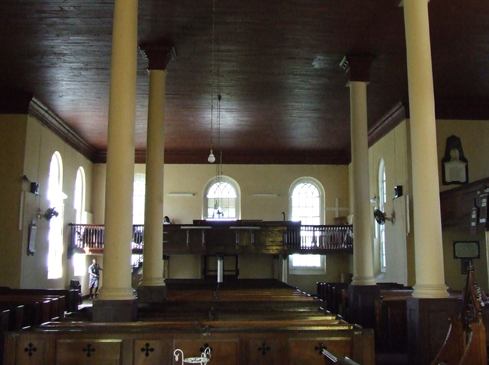
The state of a large portion of the people and their abodes, in St. Elizabeth, is described by a resident to be "most miserable; the huts not fit for habitation with dirt and filth, the accumulation of years, in and around them, enough in itself to breed a pestilence. Not a single comfort, or even convenience; often not a blanket to cover them, or a morsel of nourishment at hand."
In the elevated dry districts of the parish, although there were several sporadic cases, terminating fatally in persons who had returned from Black River, and other infected places in the plains, the disease never exhibited any epidemic tendency, although there was a prevalence of diarrhoea among the people both before and after the occurrence of the cases.
During December the pestilence continued to exist, and in some localities with severity, in various districts in Clarendon, Dorothy and Vere. Towards the end of the month it had, however, greatly abated in all of these parishes. It continued to linger in some parts of St. Thomas in the Vale.
On the 5th of December, the order issued by the Governor-in-Council on the 25th October, imposing quarantine of the outports of the island on arrivals from Kingston and Port Royal, was rescinded.
The House of Assembly met on the 10th, and after two days' sitting, again adjourned for a another month, in consequence of the absence of most of the members. Memorials to Her Majesty, praying that measures might be taken by the Imperial Government to direct the importation of captured slaves and other African labourers into the colony, with the view of supplying in some degree the dreadful loss of life that had already taken place, and was still going on, were adopted by both Houses of the Legislature.
A very able petition from the Local Board of Health of Kingston, setting forth the intolerable nuisances which abounded in that city and required correction for the safety of public health, was presented to the House of Assembly on the 13th. Embodying, as this document does, the sentiments of all the medical men of the city, it might have been expected that it would have been taken into the serious consideration of that Honourable House.
Resolutions to the same effect had been agreed to by the corporation of the city; and several of the members of that body, holding seats in the House of Assembly, declared their intention to introduce a comprehensive Sanitary Bill for the improvement of all the towns of the island.
At the beginning of 1851, the pestilence had nearly or altogether ceased in
many of those parts of the island which had been severely afflicted during the
preceding two months. A dropping case still continued to occur now and then
in Spanish Town and in Kingston; but the disease was generally tractable. It
was not, however, until the 27th of this month (January) that Kingston and Port
Royal were declared to be perfectly free, and that clean bills of health were
given to vessels leaving the harbour. The great inconveniences, necessarily
incident upon this state of things, had thus continued for a period of three
months and a half. 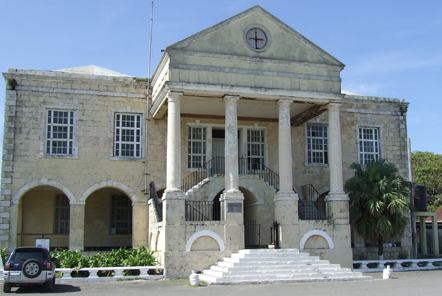
It was chiefly towards the eastern and western extremities of the island that the disease was most strongly felt throughout January, although it still lingered in some other parts, and occasionally too gave manifestations of returning force. The neighbourhood of Essington, in St. David's, was not quite free; and in St. Thomas in the East, not only did it continue in the Blue Mountain Valley, but it had threatened to re-appear, after several weeks' lull, in the Plantain Garden River district. Cases too, occasionally fatal, occurred at and around Bath in the one direction, and in the Manchineal district in the other.
In Port Antonio, the severity of the visitation was not over till the first or second week of the month.
The Hope Bay district, in St. George's, which had hitherto escaped notwithstanding the existence of the disease on either side of it, began to be affected in the first week. It appeared first in the negro settlements at Caenwood, on the Swift River, and extended thence to several of the adjoining estates. Mr. Browne, surgeon, R.N., who subsequently took medical charge of this district, pointed out to me the horribly disgusting condition of the dwellings of the people at Caenwood, arising principally from the existence of the foulest pigsties imaginable close to them, polluting the atmosphere all around. By his energetic remonstrances with the Local Board of Health, the pigs were for the time driven out from the places, and the sties covered with a thick layer of earth. There was an immediate diminution in the existing violence of the disease among the people.
Occasional cases only now took place in the Buff Bay district of the parish; but very many of the people still continued to suffer from diarrhoea and excessive debility, so that little agricultural labour was as yet resumed.
Hanover now came in for its full share of the wasting pestilence. In Lucea
the ravages were excessive, and did not cease till the last week of the month.
On some of the estates, too, in the immediate vicinity, there was a frightful
mortality. Thus, at Orange Cove estate, within a mile or two of the town, 75
out of 90 persons were swept off, including the overseer and bookkeeper, and
also 14 coolies. It was nearly a renewal of the dreadful catastrophe at Brasiletto.
The overseer and bookkeeper, who replaced those who had died, were attacked
within a day after their arrival, but they recovered. The negro village, as
well as the oversee'r house, on this estate are situated on rising ground facing
the sea; but unhappily there is a foul foetid morass of considerable extent
right between, so that the sea-breeze is inevitably poisoned with the malarious
exhalations. It has always proved a deadly place to white men. The Reverend
Mr. Stainsby, the rector of Lucea, told me, when we visited the locality together,
that he had during his incumbency buried four or five overseers of this property.
The coolies were located in the yard of the overseer's house. 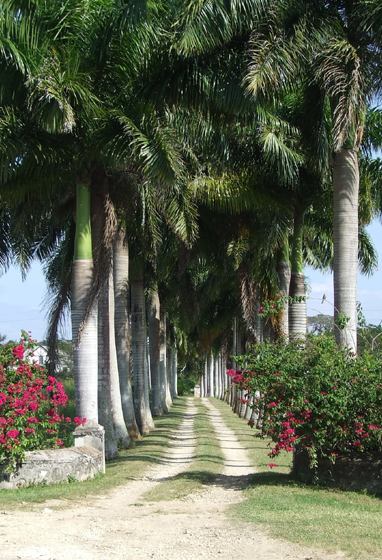
The adjoining estate, also of Haughton Court suffered severely. The first case was on the 4th. This too has always been the haunt of fever, often of a very bad type. On both estates there had been a good many cases of severe bowel complaints for a week or two before the malignant disease appeared. Bachelor's Hall estate was all but depopulated.
The localities to leeward of Lucea became affected during the first two or three weeks of January. At Esher estate the first case was on the 4th. At Lance's Bay on the 14th; there had been a good deal of diarrhoea before. At Cousin's Cove there was a case of choleraic diarrhea on the 15th; but the first death did not take place till the 22d. At Davis's Cove and also at Green Island, on the very junction of Hanover and Westmoreland, isolated insulated attacks had occurred during December; but the disease did not then spread, although there was much diarrhoea in the district. These sporadic cases appear to have generally occurred in men who had been drinking to excess, and been exposed to the night air. Several of the patients were fishermen. In the Fish River district, abounding in ponds and marshy flats, the earliest case of cholera was on the 6th in a watchman, found dead in his miserable hovel; there had been much diarrhoea for the week previously in the neighbourhood. The second case was on the 15th. A wake was held, and seven of the persons who attended were attacked on the following day; most of them died. The disease then spread generally. A few fatal cases took place about the same period at Rock Spring, Salt Spring Mountain, &c.; but there were by no means numerous, although there had been a general prevalence of bowel disorders over the whole district, for a considerable time before the earliest case of developed cholera took place. In the Greenland and Middlesex districts of the parish, immediately inland from Lucea and in the direction of the confines of Westmoreland, the influence of the epidemic began to be felt in the latter half of January. The district affected latest was that which had the freest communication with Lucea, while the pestilence was raging there.
|
|
|
1840 details, Jamaica |
Westmoreland still remained nearly exempt from the epidemic, although single cases had occurred at several points in the parish. On the 8th there was one in the Trinity district, in a man who had recently come from Lucea; and on the 24th a gentleman who had returned from the same place was attacked in Savanna-la-Mar. Nevertheless no other case followed. A considerable number of cases had occurred, too, in the north-east districts of the parish, near the borders of Hanover and St. James; several of these proved fatal, but the disease did not then spread. "The nearer the cholera approaches' writes a resident at the time, " the greater is the panic that seizes the negroes; and although the estates manage to keep work, they are compelled to pay a rate of wages which the present price of sugar will render unremunerative. In any event the proprietors will be serious losers."
The comparative immunity of Westmoreland, while every other parish in the island had been so severely afflicted, was by many attributed to the precautionary measure adopted by the Local Board of Health of having established a sort of sanitary cordon at various points of the boundaries of the parish, so as to prevent the entrance of persons from any of the adjoining parishes where the disease was existing. Special constables, as well as the regular police, were employed in this duty by the authority of the custos or principal magistrate. Very summary punishment was inflicted on any who transgressed the order, or attempted to pass the forbidden line; they were well smoked, almost to stifling, besides being soundly thrashed. Letters, too, and newspapers were subjected to thorough fumigation before being admitted. An endeavour was also made to prevent the rural population, living in the high lands in the interior, going down to attend the markets; but this was found to be impracticable of execution. Several vessels had been most needlessly detained for a considerable time in quarantine at Savanna-la-Mar.
The House of Assembly met on the 14th of this month (January), and in two or three days again adjourned, to the 11 th of February. One of the members gave notice of a motion to introduce a Bill to provide for the incidental expenses attendant upon the cholera, but no further notice of the terrible visitation was made.
His Excellency the Governor, in his despatch to Earl Grey of the 11th January, says, "I shall not fail to recommend to the local Legislature, in accordance with your Lordship's instructions, the adoption of sanitary laws and of a precautionary system of internal order, as more efficacious than quarantine.
|
|
|
Arms of the colony of Jamaica |
The chief features of the epidemic in February may be said to be its re-appearance
in several places in which it had for some time nearly or altogether ceased,
and its development in others which had hitherto remained free, although the
pestilence had been in their immediate neighbourhood. The antecedent and associated
circumstances, whether they be casual or not, of these occurrences are not as
yet known, nor indeed have they been attentively examined. They form, however,
an important point in the history of the pestilence. In St. James's, it broke
out for the first time in some of the rural districts not far removed from Montego
Bay, and in which there had been a good deal of diarrhoea during the prevalence
of the cholera in the town two months before. It was during the first and second
week of February that the estates of Montpelier, Belmont, Unity Hall, Tower
Hill, Spring Garden, Reading, &c., localities previously unscathed, began to
suffer. The attack on some of these properties was attributed by the residents
to the exhalations from the cholera burial ground in the neighbourhood of Montego
Bay being wafted towards them when the wind was in particular direction. The
mortality at Montpelier was very great, aggravated, no doubt, by the prostrating
influence of the panic which seized the negroes. Being in Montego Bay at the
time, an application was made to me by the managers of some of the affected
estates, for advice as to the best measures for arresting the ravages of the
disease among their labourers. The following is an extract from my letter of
reply published in the local news papers at time, 17th February: -- It is in
vain that we try to arrest the disease by medical treatment or by remedial measure
we can adopt, as long as the indoor condition of the dwellings at night is such
as I have attempted to describe. What then is to be done to mitigate this terrible
evil, and thereby to prevent in future the 'ccurrence of that dreadful sacrifice
of life which has already taken place in the negro houses, in so many districts
of the country? I know but one of one plan, and that is to thin the inmates
of these houses by removing as many of them as possible to places where they
can have the benefit of fresh untainted air, however imperfect the accommodation
in other respects may be for the time. It has occurred to me that the trash~houses,
if not occupied, or any other large buildings on estates, provided only they
be roomy and well aired, such that the curing-houses, old barracks, or hospitals,
&c.- might be advantageously made use of for the three or four weeks during
which the influence of the epidemic may continue to be felt. In several places
in England numbers of people were moved out of their infected dwellings and
camped under tents upon adjoining hills and invariably with the happiest results.
The same practice, it is well known, has on numerous occasions been had recourse
to with troops both in Jamaica and in other parts of the world, and always with
marked benefit. Might not sheds or temporary huts be quickly run up in a well-chosen
spot for the accommodation of a few hundred persons, until the breath of the
pestilence had passed away from the district? ..... If the plan be adopted;
I feel confident that many hundreds of lives will be saved, should the cholera
continue its presence in the island. The treatment too of those who still remained
in their cottages would, at the same time, be rendered much more easy if they
be attacked with the disease, and the chances of their recovery be greatly enhanced.
The advice was acted upon on in a few places, and always with success in preventing
or greatly diminishing the otherwise inevitable mortality. It was in February
that the only three cases of the disease which occurred, throughout the visitation,
at the mountain garrison of Maroon Town (in St. James's), the elevation of which
is between two and three thousand feet, took place. The first case was on the
15th, the second on the 17th, and the third on the 18th. Hanover was
the parish where the epidemic now continued to prevail most severely. Lucea
was nearly free, but the negro village of Elgin Town and Johnson's Town on the
opposite side of the bay were still a good deal affected. In some parts too
of the Fish River, and of the Green Island districts, numerous deaths occurred.
At Cousin's Cave and other points on the coast, the disease had much abated
by the middle of February. In Trelawny, solitary and sporadic, or slightly congregated,
cases continued to occur in different parts. At the beginning of the month, Litchfield
estate, only four miles from Falmouth, was visited for the first time. The overseer
of Stewart Castle estate, between Falmouth and Duncan Town, was attacked on
the 21st; and towards the end of the month, two or three cases occurred in Falmouth,
Martha Brae, &c. As in St. James's, so in St. Anne,, several estates which
had escaped while the pestilence was so virulent eight or nine weeks before,
were now attacked. There was also a partial re-appearance of it, and in the
neighbourhood of Ocho Rios. A like occurrence took place about Port Maria, Orocabessa,
and in some parts in the Highgate district of St. Mary's. The burial-ground
at Port Maria was in a dangerous and disgraceful state. In consequence of the
heavy rains, , some of the graves and trenches had been laid open, and half-decayed
corpses were partially exposed. In Metcalfe and St. George's,
the malignant form of the epidemic existed in one or two districts until about
the end of February, when it became replaced by diarrhoea, dysentery, and fever.
The adjoining parish of Portland was similarly affected. The latest case of
cholera in Port Antonio was on the 14th; but several cases occurred at a later
date in some of the rural districts, and also in the Manchineal district of
St. Thomas in the East. The rest of this latter parish was nearly free, with
the exception of the Blue Mountain Valley, where it had re-appeared about the
21st. That the morbific poison still lingered in some parts of St. David's,
is shown by the fact, that an inspector and several of the police force, as
well as some of the resident population, were attacked at Essington in the course
of this month. A solitary fatal case occurred at Spanish Town, in a man who
had come from St. Thomas in the Vale, and another at Linstead on the
15th. In all probability, there were others in different parts of that parish
of which there was no account. It would indeed seem, from what was observed
in the adjoining parish of St. John's, that the disease had at no time entirely
ceased in some districts from the date of its first development: - cases of
a milder type, with occasionally an insulated one of greater malignancy, having
continued to occur ever since, This will appear from the course of the epidemic
in the district of Luidas Vale, and more particularly upon Worthy Park, where
a very accurate record was kept by Mr. Price and Mr. Reid, the proprietor and
the manager of this fine estate. The earliest case was on the 15th of November;
the second on the 18th. Several persons were attacked on the following day,
and after this, the disease spread generally, and prevailed for about a fortnight
with great severity. There was a lull from the 6th to the 23d of December.
The weather during the time was dry and fine. Rains then set in, and the disease
re-assumed force. After the 5th of January, no fatal case occurred till towards
the end of the following month, with the exception of two cases in men who were
seized with bowel complaint on the 10th and 11th, and immediately returned
to Mount Diabolo in St. Thomas in the Vale, where they both died. Diarrhoea,
however, was prevalent in Luidas Vale throughout January, and in the early part
of February. On the 22d of the latter month, there was a decided case of cholera,
and another on the 23d. Both patients recovered. On the 26th, three fatal cases
occurred, each in different houses, and in labourers working at different places.
Two of them had been affected with diarrhoea for a day or two previously. The
attacks then became diffused over the district generally, and proved very fatal.
From eight or twelve deaths occurred daily for several days in the first week
or two of March. The disease was of an extremely malignant type; two-thirds
at least of those attacked died. There was no medical man nearby. "There are,"
says Mr Price, "in fact, from 20,000 to 25,000 souls scattered over a run of
country of above 1,000 square miles, on which there is neither doctor, nor I
believe dispensary." Medical aid was at length procured mainly through the liberality
of Mr. Price. The circumstances connected with the fatal case of Mr, 'I'horburn,
the manager of Thetford Estate immediately adjoining to Worthy Park, are worthy
of notice. The details are instructive in several points of view. For two or
three days before the 8th of March when the malignant symptoms commenced, he
had been affected with diarrhoea, and had exposed himself at night in the cane
fields around the house. His mind, like that of all who had charge of sugar
properties, was much harrassed from the difficulty of procuring labour for the
care of the land. Notwithstanding the want of medical assistance, he rallied
from the choleraic attack, but secondary fever ensued, and he sunk on the 14th.
Mr. ... 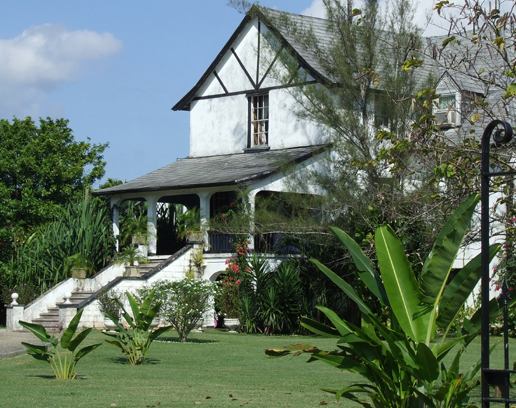
(Page 30 is missing from the copy provided us - Ed)
... the parish, more particularly in the mountainous districts near the borders of Hanover.
Chickenpox prevailed about this time, to a considerable extent, not only in Kingston, but in various parts of the island. This disease is not unfrequent in Jamaica, and is sometimes so severe as to leave slight pittings on the surface.
During May, Hanover continued to be the only portion of the island
to which the cholera clung with tenacity. It still lingered on the sea-coast
eastward of Lucea, as at Tryall near Sandy Bay, and around Flint River and Sandy
Bay, on one or two estates a few miles inland from the town; also in the Green
Island and Fish River districts; and every now and then cases of a suspicious
nature manifested themselves in Lucea itself. At the beginning of the month,
it broke out with severity in the wide district which comprises Pondside, Great
Valley, Mountain Valley, Cascade, Retreat, &c. The weather at the time
and throughhout the entire month was extremely wet, both�in Hanover and Westmoreland.
The rivers had overflowed their banks, and large tracts of country were under
water. It was towards the end of May that it became evident that the enemy,
which had been so long hovering about the borders between the two parishes,
was beginning to make its fatal incursion into the latter, notwithstanding the
protracted endeavours to keep it out mechanically. Very nearly about the same
time cases occurred in different and distinct localities, having no
direct communication with each other, as at Flamstead, Glasgow and its neighbourhood,
near the boundary line with Hanover, at Morgan's Bridge and Belleisle in the
middle of the parish, in the Paul Island district, and in the Trinity district,
leaving the intermediate localities uninfected. Diarrhoea had been prevalent
in most of these places for a week or two before the first cases of developed
cholera. The attacks rapidly multiplied, and it was soon too obvious that the
pestilence was spreading itself over the parish. The earliest case on Mesopotamia
Estate "as at the very beginning of June. Great loss of life ensued subsequently.
Savanna-la-Mar had as yet escaped; but bowel complaints had begun to be general.
It was about the beginning of the second week of the month that the earliest
fatal case took place in the town, but the disease did not exhibit a tendency
to epidemic diffusion for another week or so; then it very quickly spread, and
in a most deadly form. Scarcely a single case recovered; medical treatment seemed
to be of no avail. In the upper part of the town, in what is called the Dunbar
River locality, it raged with extreme violence. The weather continued to be
excessively wet, the rain pouring down with little intermission for several
days together. It was all but impracticable for the medical men to reach the
wretched hovels of the people in the rural districts. The roads were scarcely
passable. While the disease was increasing from week to week, both in extent
and fatality, the Local Board of Health of the parish was the scene of angry
disputes among the members; and vehement opposition was offered by some of the
resident proprietors to the removal of the sick to buildings near their estates,
and even open threats made that, if the attempt were made, the patients would
be smoked and the buildings burned down to the ground. This was of course one
of the natural consequences of the doctrine of contagion which had been so industriously
impressed upon the people of the parish, by the proceedings of the last six
months. At the end of June nearly 100 victims had fallen to the scourge in Savanna-la-Mar,
and the disease had not then reached its acme. The proportion of recoveries
was extremely small. On the 25th Mr. B--, a clergyman, with his family, left
the port on board a small vessel for Kingston. From opposing winds, they were
unable to proceed little more than half way. They were obliged to put back to
Savanna-la-Mar, which they reached on the 3d of July, when it was found that
Mrs. B., her mother, and one of her children, as well as a daughter of the master
of the droger, had died from cholera, and that Mr. B. lay on board in a dangerous
condition. 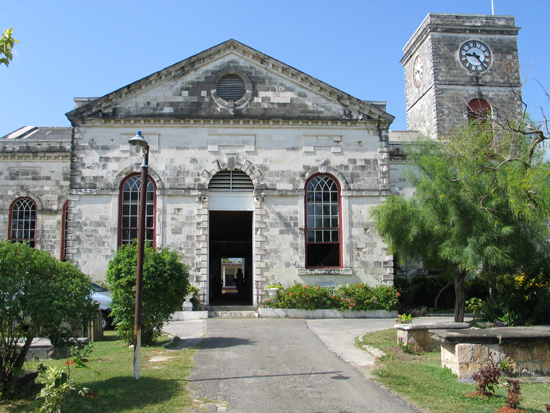
June was characterised not only by the outbreak of the epidemic in Westmoreland for the first time, but by its re-appearance in other parts of the island. It still clung to those districts in Hanover which had been so long under its influence, as around Sandy Bay and in the Green Island and Fish River districts; and it had again made its appearance in the negro settlement of Elgin Town and other localities near to Lucea as well as on several estates to leeward of the town. In the parishes of St. James, Trelawny, St. Mary, and St. Thomas in the East sporadic cases of cholera and choleraic diarrhoea manifested themselves in different districts. But the most remarkable development of the disease, during this month, took place at Up Park Camp among the soldiers of the 3d West India Regiment, recently arrived from Demerara. A special notice of this outbreak will afterwards be given. About the same time isolated cases, several fatal, occurred in and about Kingston, and in one or two vessels in the harbour; there was also a remarkable prevalence. of choleraic cholic and diarrhoea among the prisoners in the penitentiary. Bowel complaints were frequent in the town and the neighbourhood. A solitary case took place On the 24th in Spanish Town, in a house where three deaths had occurred during the epidemic in November last. It is to be remembered that the early rains fall towards the end of May.
At the beginning of July, the pestilence continued to rage at Savanna-la-Mar and in many of the rural districts of Westmoreland. It reached its acme in that town on the 10th and 11th, the mortality then amounting to 35 in 24 hours. After the 15th it decreased rapidly, and had almost entirely ceased by the 23d; it continued, however, to prove exceedingly destructive in many of the agricultural districts both to windward and leeward of the town, as well as in the interior of the parish, more particularly near the borders of St. James's and along the course of the Great River. The total mortality in Savanna~la-Mar amounted to between a fourth and a fifth of the whole population, estimated at about 1,500. The weekly progression of the mortality is shown below:
(The table given below is not exactly in the original format as printed - Ed)
| From June 7 to 14 - 4 | From July 1 to 7 - 65 |
| From June 14 to 21 - 29 | From July 7 to 14 - 118 |
| From June 21 to 28 - 30 | From July 14 to 21 - 48 |
| From June28 to 30 - 35 | |
| Total - 98 | 231 |
| 98 | |
| Total 239 |
It was always anticipated that if cholera reached this town, it would prove very destructive; its situation being on a low flat, with an extensive morass, which communicates with the sea, close upon it. Many of the inferior houses are built right on the swampy ground, and there is of course much filth both within and around them. There is also a great amount of rank bush vegetation in the upper part of the town, much more indeed than there used to be in former years. The consequence has been that this part has become decidedly more unhealthy. The supply of water in the town is very defective. During July the disease, besides continuing in those parts of 'Hanover, where it had been lingering so long, partially re-appeared on several estates in the Plantain Garden River and Manchineal districts in St. Thomas in the East; also in some parts of Portland, and with great severity in the Hope Bay and Swift River districts of St. George's, while in other parts of this latter parish, diarrhoea had become exceedingly prevalent.
In Kingston sporadic cases of cholera continued. every now and then, to occur. Two well~marked cases were admitted during the first week of July into the public hospital, one from a vessel in the harbour, and another in a patient; who had been eating a quantity of the fruit, of the guenep tree.
Throughout the present month, there was a general epidemic of influenza in
almost every part of the island. Many of the cases in Kingston and Spanish Town
were of a severe character, and several proved fatal The disease usually set
in with intense headache, and with such powerlessness in the limbs that the
patients imagined that they were about to be seized with a fit, or a stroke
of the palsy; the prostration was extreme. Occasionally the stomach and bowels
were excessively irritable, while in other cases the bronchitic symptoms were
alarming. Not a parish escaped. In Dorothy, Clarendon and Manchester it was
particularly rife during July, entire households being disabled at the same
time. The north side of the island suffered most severely in the following month.
In many of its features it resembled the dengue or dandy fever, which prevailed
to so great an extent over the West Indies in 1827. Occasionally it proved seriously
fatal among the lower classes, where the utter want of medical assistance was
severely felt. Cuba, as well as many other of the West India islands, had been
visited by the epidemic while it was prevalent in Jamaica. 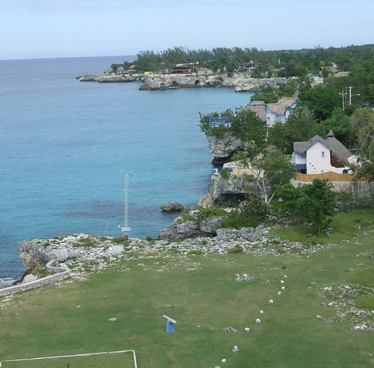
It was in July that the earliest cases of small-pox occurred in the parish of Trelawny, from which the disease eventually spread over almost every part of the island, causing a great sacrifice of life. It continues up to the present time. The circumstances connected with its development will be stated in the sequel.
In August occurred the remarkable outbreak of cholera among the troops lately arrived from Europe, at the mountain station of Newcastle; this forms one of the most instructive episodes in the history of the epidemic in Jamaica. It appeared also in other elevated districts in the St. Andrew's mountains, as at Middleton, Chester Vale, Mount Lebanon, and also in some of the mountain properties in the parish of St. George to the northward. Several cases occurred likewise at Gordon Town and other localities nearer the plains. A death occurred in the Female Penitentiary at Halfway Tree on the 15th, and one at Up Park Camp on the 22d, in a black soldier lately arrived. from Sierra Leone. In Kingston also a good many cases occurred, several proving fatal. With the exception of the Negril district, which had not been invaded hitherto, the parish of Westmoreland was nearly free towards the middle of the month; but about the end of it cases began to re-appear in the suburbs and neighbourhood of Savanna-la-Mar, after a lull of a few weeks. It still lingered in some districts in Hanover; nor were St. James's and Trelawny entirely exempt, occasional seizures having taken place in both parishes.
Throughout August influenza was exceedingly prevalent in many districts of the island, particularly on the north side. The weather had been extremely wet in St. James's and other parishes there.
During the first half of September there was an increase in the number of cases in Savanna-la-Mar, as well as in many of the rural! parts of Westmoreland, after the very heavy rains. In the latter half, several persons were attacked in Montego Bay; the cases occurring in the very same part of the town, Meagre Bay, where the disease first manifested itself 10 months before. Diarrhoea and other forms of intestinal disease were prevalent in many of the inland parts of St. James and Hanover.
It was not until the latter half of October and beginning of November that any decided exacerbation took place in those districts where the disease had been lingering so long, more particularly in the Green Island district in Hanover, and around Montego Bay, and along the course of the Great River in St. James's. It was generally believed that the continued wet weather, followed by intense heat, had something to do with it. The number of deaths in the latter parish alone was estimated at between 200 and 300 at least. Several parts of Westmoreland also suffered a good deal throughout November.
In December, the parishes of St. James, Hanover, and Westmoreland were still the chief, or all but the only, seats of the disease. In Trelawny, besides the small-pox, which by this time had fairly begun to manifest itself as an epidemic, there was in many parts a great deal of diarrhoea, and a good many cases of cholera also had occurred. The south side of the island and the eastern half were quite free.
|
|
|
Map of Jamaica, 1804. |
Throughout January and February 1852, it continued to linger in some of the inland districts of the above parishes. In March, it had all but disappeared; and by the end of that month it seems to have entirely ceased in every part of the island, after a duration of nearly 18 months, to be followed unhappily by another formidable epidemic, which was always more dreaded, and against the incursions of which as few timely precautions had been taken. Associated with the small-pox has been a wide-spread epidemic of measles.
The entire mortality from the cholera throughout the island may be estimated at between 40,000 and 50,000 at least, out of a population which has generally been considered to be about 400,000. The country was therefore more than decimated of its inhabitants; and if we suppose that every second person attacked died, it will be thus seen that a full fifth of them were struck with the severe form of the disease, independently of the prodigious amount of diarrhoea &c ., among the remaining four-fifths. Little wonder then that the industrial labour of the colony has been prostrated, that the price of labour has risen immensely, that the remuneration of production has correspondingly fallen, that very many estates have been abandoned in consequence and that a deep and general gloom hangs over the prospects of the land.
As an example of the destruction of life among the peasantry over a large sugar-growing district, the most productive on the island, I give here a table of mortality in divisions No. 2 and No. 3 of the parish of St. Thomas in the East up to the beginning of 1851 There were occasional and partial re-appearances of the disease subsequently.
(The table given below is not exactly in the original format as printed - Ed)
| Bath District |
Deaths | Plantain Garden River District |
Deaths |
| Bath, town, population 600 | 58 | Bowden | 26 |
| The Rhine Estate | 11 | Old and New Pera, Barking Lodge and Springfield | 128 |
| Plantain Garden River Estate | 38 | Rocky Point, Chiswick, and Chapel Hill | 72 |
| Friendship | 30 | Dalvey | 85 |
| Potosi | 12 | Hampton Court and Duckenfield | 94 |
| Airy Castle and Gressett | 144 | Holland Bay | 24 |
| Ginger Hall | 26 | Holland Estate | 150 |
| Sunny Hill and Thornton | 42 | Amity Hall | 40 |
| Mount Stewart | 24 | Hoadley | 25 |
| Mount Felix | 31 | Wheelerfield | 35 |
| Cotton Tree Mountains | 11 | Bachelor's Hall | 1 |
| Scotland | 2 | Golden Grove | 185 |
| Port Morant | 55 | Winchester | 65 |
| Cardiff | 2 | Airmount | 8 |
| Leith Hall | 24 | Arcadia Land | 30 |
| Clifton Hill | 31 | Philipsfield | 41 |
| Harbour Head | 68 | Pleasant Hill | 27 |
| Harbour Head Land, Richmond Hill, and Belmont | 29 | Stokes Hall, and Free Land | 25 |
| 638 | 1,070 plus 638 | ||
| Total | 1,708 | ||
Entire population of the two districts estimated at about 8,000.
I now proceed to give special descriptions of the principal towns, with particulars
of the visitation in each. It will then be seen more distinctly how much the
virulence and fatality of the disease were increased by the influence of local
conditions and other causes, all of which are, obviously, more or less controllable
by human agency. 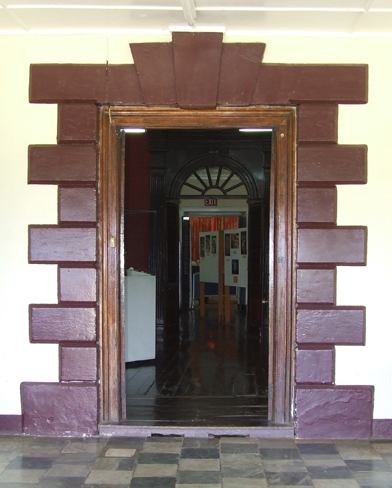
1. Port Royal is situated at the extremity of a narrow and irregular reef-like spit or tongue of land, which stretches for 10 or 12 miles from the shore, and forms a natural breakwater to the harbour of Kingston, that would otherwise be an open roadstead, This long sandy projection is in no part much above the level of the sea, which dashes over it during strong winds at different points. It is generally known by the name of the Palisades. The only vegetation to be seen consists of clumps of low mangrove bushes, nor is there any building upon it, except at the extreme point where the town stands. Little more than half a mile from this point, there is a good deal of swampy ground; and here it is that the burial-place of Port Royal, where many thousands and tens of thousands have been laid, is situated. The graves cannot of course be dug deeper than two or three feet, and even at that depth, they are generally filled with water. Being in an E.N.E. direction from the town, the emanations from this spot are not carried towards it by the regular land and sea breezes. It is only when a particular wind, called the rockwind is blowing, that they are apt to be so. Before and during the prevalence of the cholera, the winds were so shifting and irregular that the effluvia not only from the direction of the hurial-ground but also from the opposite shore of the mouth of the harbour, where there is much swampy land, may possibly have served to increase the then existing unwholesome condition of the atmosphere.
But 1t needed no extrinsic source of contamination to account for the virulence of my pestilential disease in Port Royal. The following graphic description of the place of the place by Dr. Wingate Johnston, Deputy Inspector of Fleets, &c., in the Report of the Central Board of Health will enable the reader to judge of its present state: --
|
|
|
1804 Lucea notice, Jamaica |
"The town of Port Royal does not cover any great extent of ground. It is traversed by five moderately wide streets, which run nearly parallel to each other in an E.N.E. and W.S.W. direction. These streets are intersected by numerous narrow lanes, which run generally at right angles from the before-mentioned streets, between which lanes are situated square blocks of ill-ventilated filthy hovels, the majority of them undeserving the name of a house. Many of them contain only one apartment, in which five or six human beings are to be found huddled together in a space of little more than about double as many square feet, without any domestic conveniences; the floors are generally earthen, dirty and damp, more like cellars than human habitations.
"Most of the houses have small court-yards attached to them. which are generally the abode of pigs and goats, and are also invariably the depositories of every species of disgusting filth, such as human ordure as well as other excrementitious matters, stinking fish-guts, and putrid slops; in fact, everything is there to be found excepting cleanliness or pure water. The stench perceivable in the vicinity of some of these localities is at times intolerable. The few inhabitants, that do observe anything like decency (there being no public privies), generally resort to the beach facing the sea in front of the battery in the vicinity of the church. About this spot the nightsoil is also generally deposited. When the sea breeze blows home, this place is directly to windward of the town; and there can be no doubt that the exhalations arising from the filthy stinking accumulations must have a direct effect in lowering the standard of health, and also in predisposing to epidemic attacks. We need not therefore be at all astonished that, at the town of Port Royal, cholera assumed a degree of virulence unknown in more cleanly localities."
The population consists chiefly of boatmen, fishermen, bumboat and washerwomen, and of artisans and workmen employed in the dockyard. There is always a great deal of idleness and low vicious dissipation, as in all seaport towns.
The only supply of fresh water for the inhabitants is obtained as a favour from the dockyard and barracks, all the water being brought in vessels from Rock Fort for the use of the public service. The supply is of course stinted, and utterly insufficient for the purposes of cleanliness.
As none of the streets are paved or macadamized, whatever rain falls on the surface sinks into the loose sandy soil, which, being bestrewed and impregnated with filth, is at all times little better than a foul sponge. In close hot weather the exhalation from the ground are often positively fetid. And here I cannot but remark that the quarters which have hitherto been assigned to the assistant surgeons of the naval hospital, have always been so notoriously unhealthy that very few who have resided there have escaped serious illness, and the proportion of deaths among these officers has been unusually large. It is no wonder.
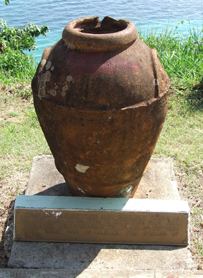
Independently of the obvious mal-construction of the building itself, the horrible effluvia from the abominations on the surface immediately outside of it are such, that the windows of the mess and sleeping rooms can frequently not be opened. I strongly suspect that had had it not been for the considerate kindness of Dr. Johnston, in permitting the assistant surgeons to occupy good airy quarters in the hospital, more than one of them must have have fallen a sacrifice to the late epidemic. Such a state of things is really too bad and the more so as official complaints have been repeatedly addressed to the Admiralty on the subject.
More than twelve months before the appearance of the cholera at Port Royal, the Earl of Dundonald, then Admiral of the West India station; had deemed it his duty to call the attention of the Admiralty to the foul condition of the town influencing the health of the patients in the naval hospital; and in a letter subsequently addressed by him to the mayor of Kingston he remarked, " never have I seen in the whole course of my life a place so disgustingly filthy, or which could give so bad an opinion to foreigners, as the town of Port Royal." He had then pointed out the very spot where he felt confident that if cholera or any other malignant epidemic should show itself, it would rage with the greatest fury. The prediction was verified to the letter. Most of the hovels which stood there had been pulled down when I visited the spot.
So thoroughly bad is the whole town, that his Excellency the Governor, in a despatch to Earl Grey (11th November 1850), suggests its entire reconstruction: "It would educe good out of evil if either Her Majesty's Government, or the local Legislature of the colony, were to seize this opportunity of buying up the whole site of Port Royal, and of forming a wholesome town at the entrance of one of the finest and most important harbours in the world. I do not think the ... "
(Ends these selections from the 1850 Cholera Report. Only pp. 24-35 [page 30 is missing] of the original report are given above - Ed)
This free script provided by
JavaScript Kit
View web stats from www.statcounter.com/ for this website begun 4 July 2006

